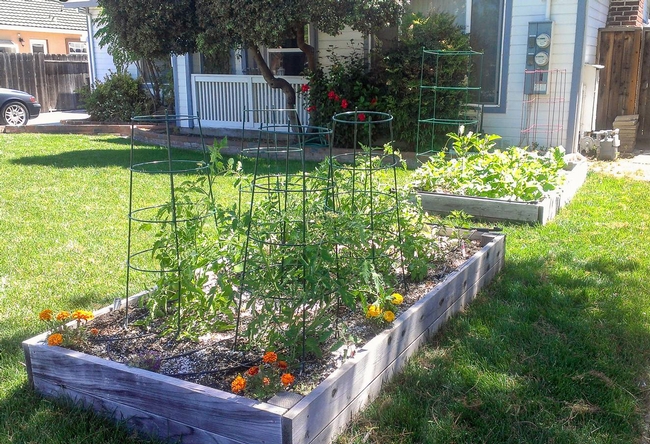Posts Tagged: Chris McDonald
Organic fertilizer AGRO GOLD WS may contain glyphosate and diquat
The California Department of Food and Agriculture (CDFA) announced today (Dec. 4) that a Stop Use notice and statewide quarantine have been issued for the organic fertilizer product AGRO GOLD WS to all organic operations registered in California.
Residents who use the product in their gardens or landscapes should also be aware the product may contain weed killers, said Chris McDonald, UC Cooperative Extension natural resources advisor.
"Home gardeners should not use the organic biological amendment Agro Gold WS, which is commonly sold as a bundled package with the organic herbicide Weed Slayer," said McDonald. "CDFA has found Agro Gold WS to have been adulterated with the herbicides glyphosate and diquat, which may kill your plants."
He advises home gardeners to read the CDFA press release at https://www.cdfa.ca.gov/egov/press_releases/Press_Release.asp?PRnum=20-173 for more information.
Invasive weeds are taking a toll on wildflower displays
Sahara mustard, a resilient weed native to North Africa and the Mediterranean, is invading desert landscapes in the American Southwest, squeezing out beautiful wildflower displays that attract tourists and maintain the local ecology, reported the San Diego Union Tribune.
UC Cooperative Extension is testing methods of removing Sahara mustard, including hand weeding, hoes and herbicide. But these are only stopgap measures meant to keep the plant at bay in select spots.
“I don’t think we’re ever going to spray the herbicide across the entire Southwest,” said Chris McDonald, UCCE advisor in San Bernardino County. “But the idea is preserving areas of value, such as the wildflower fields of Borrego Springs.”
Sahara mustard has been in California since 1927, but it wasn't until Hurricane Kathleen doused California in 1976 that it proliferated widely, according to Rich Minnich, professor in the Department of Geography at UC Riverside.
“There was this gigantic explosion of mustard, and it’s never been the same since,” Minnich said.
Anza-Borrego's tough eradication project: Cutting the mustard
Louis Sahagun, Los Angeles Times
A front-page story in the Los Angeles Times detailed the changing attractions in Borrego Springs. Tourists used to come to see a colorful display of wildflowers, but because of an invasive weed, Sahara mustard, local officials are now trying to turn visitors attention to hiking, cycling, star gazing and photography instead. UCCE's Chris McDonald, who is conducting research on Sahara mustard control, was featured in four of the nine photos that accompanied the story.
Nutgrass: Three experts' solutions to one of the worst weeds
L.A. at Home blog, Los Angeles Times
Nutsedge is commonly considered a gardeners' worst enemy, which is further proven by the draconian measures to control the weed offered by UC and other experts in the L.A. at Home blog this week. In the introduction to the problem, Cheryl Wilen, UC Cooperative Extension advisor, notes there are two kinds of nutsedge. One way to tell them apart takes a little courage.
"If you are inclined to bite into one," she said, "yellow nutsedge has a pleasant almond or brazilnut taste, while purple nutsedge does not have a good flavor."
Controlling either kind is challenging. Yvonne Savio, UCCE manager of the L.A. County common ground program, suggests extricating the weed in a way that may seem extreme.
Dig 6 inches around and under each weed and throw the weed and dug up soil into the garbage. "Don't even think of composting the weed or filtering the soil through a screen," Savio said. The weeds will come back.


